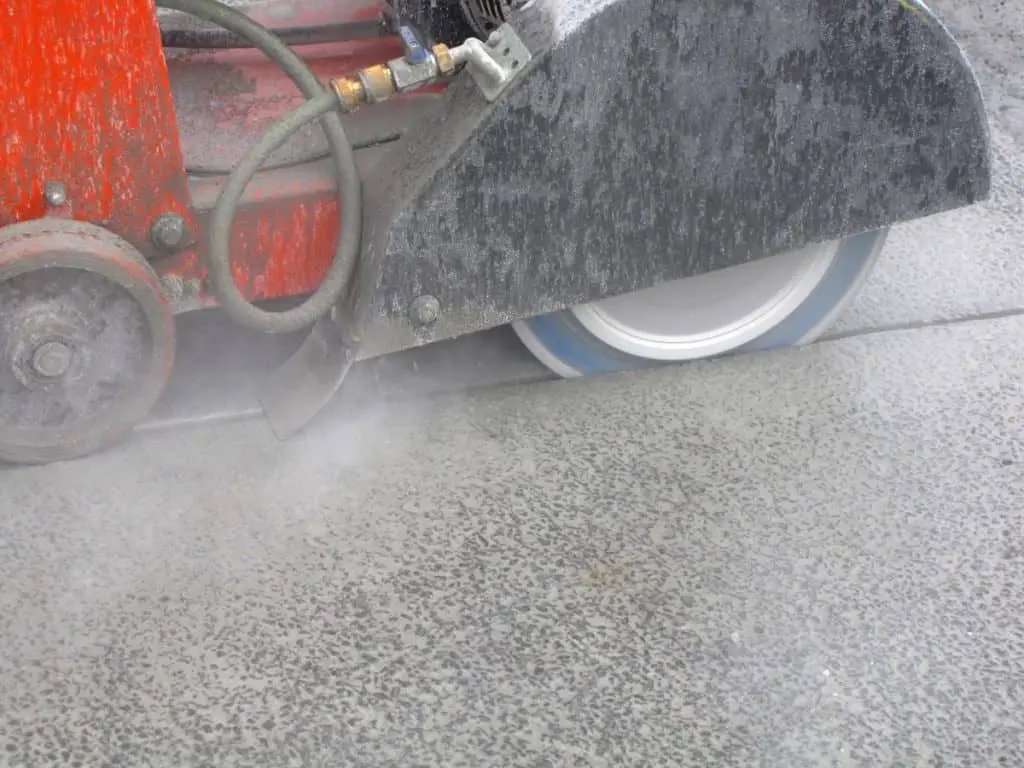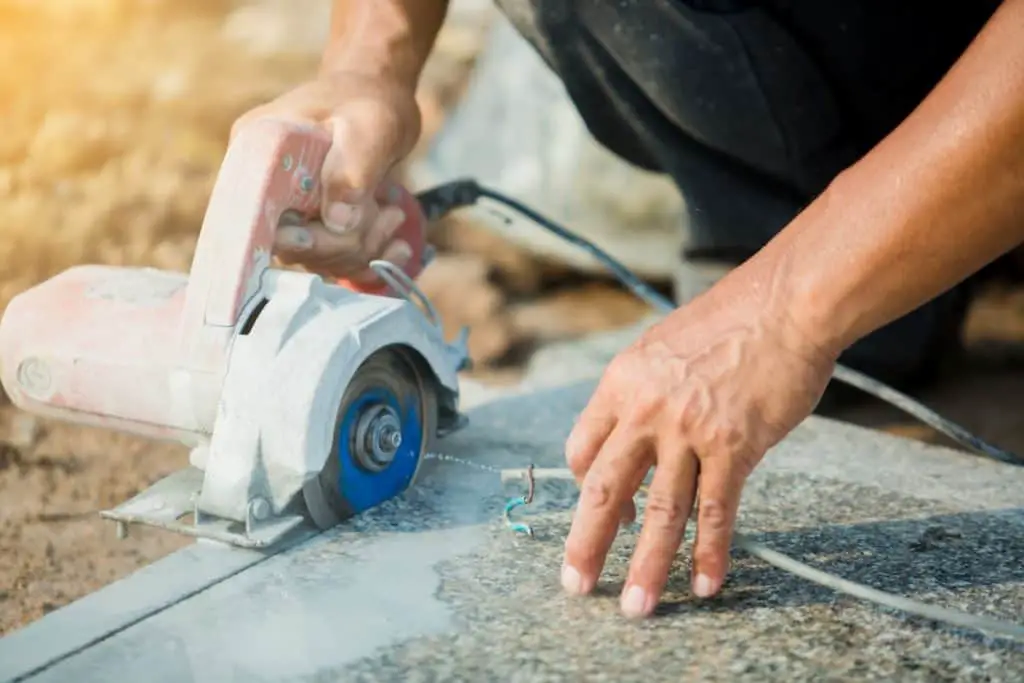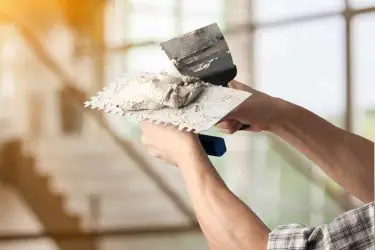Some contracting jobs will require cutting through concrete, whether it be for modification or for making improvements on concrete that has already hardened and cured. If you’re in this situation, you may come across concrete that has been reinforced with rebar. Cutting through rebar can be a bit of a challenge and it’s good to know your options.
A concrete saw that utilizes a diamond blade is the best kind of saw to cut through concrete that contains rebar to support its integrity. Other concrete saws that utilize other types of blades, such as abrasive blades, can break up, cause problems with the concrete, or be too weak to cut the rebar.
Some professionals will say that using abrasive blades, or any other types of blades on concrete saws, can still cut through rebar. While many opinions differ, most of us would rather be safe than sorry. Below are a few facts to take into account when considering cutting rebar in concrete.

Concrete and Rebar
Rebar is the name given to reinforced steel bars that are mostly used to reinforce concrete. Rebar is mainly used because of its tensile strength.
Concrete itself has a lot of compressive strength but doesn’t have much tensile strength. Rebar has approximately 40,000 pounds per square inch of strength to add if installed properly.
Small structures, such as patios or sidewalks will not have rebar in the concrete. Mostly large structures such as buildings, parking garages, or skyscrapers will require reinforced steel structures.
Read more: When Do You Need to Add Rebar to Concrete for Extra Strength?
At times, these large structures will need to be maintained, modified, or improved. Contractors will need to cut the concrete as well as the rebar.

Cutting rebar can be tricky since it is built to be durable as reinforced steel.
Some rebar has higher thicknesses than others. The bar size designation ranges from #3, which has a bar diameter of 0.375 inches to #18, which has a diameter of 2.257 inches.
The thicker the diameter, the more difficult it will be to cut the rebar. You must also consider the age and condition of the rebar as well.
In addition, depending on how tough the concrete is, you may need to use blades with a stronger steel core. Always be sure to take proper precautions before cutting concrete.
Concrete Saws
Using a concrete saw, sometimes called “circular saw,” “consaw,” or “road saw,” is the most common way to cut through concrete and, by extension, rebar.
It can also be used for cutting materials like asphalt and tile as well. They tend to be more powerful than most other saws. Most are handheld tools while larger ones can be walk-behind saws.
There are many types of concrete saws out on the market right now.
Each can hold blades up to a certain diameter. The range is typically between 4-inches and 36-inches in diameter.
Pricing for saws ranges anywhere between $100 to $4000, depending on the name brand and how heavy-duty the saw is.

Most concrete saw blades are made from steel or carbide. Carbide tends to be stronger and has a longer lifespan than steel.
However, the strongest and most durable type of saw blade has diamonds that are bonded to the edges of the blade and are used to grind (rather than cut) very hard materials like concrete.
Prices of diamond blades range between $10 to $400 but are typically more expensive than other types of blades.
Strongest Diamond Blade Grade
There are three types of grades for diamond blades: Sintered, high frequency welded, and laser welded.
The strongest grade of diamond blades is the “laser welded” blades. It’s also the type of grate best suited for concrete grinding.
The difference between laser-welded and the other types of grades is that the blade core is very rough rather than smooth or flat. The diamond segments meet the blade core.
Laser-welded diamond blades have a longer lifespan than other blades. See below for a general comparison.

| Laser-welded | Sintered | High-frequency |
|---|---|---|
| Has a large depth and width of the weld area. | Smaller depth and width of weld area. | Large depth and width of weld area. |
| Very accurate weld. | Less accurate weld. | Accurate weld. |
| Used by professionals primarily for concrete grinding. | Used by Do-it-yourselfers for low-risk projects. | Used for stone cutting. |
| Withstand higher temperatures, extending the lifespan of the blade. | Cannot withstand temperatures that are too high (i.e. cutting rebar). | Cannot withstand temperatures that are too high. |
It would appear that laser-welded diamond blades are the most ideal blade to use when cutting concrete in general.
Although it can withstand higher temperatures, you should use a technique called “wet cutting,” where water is used as lubrication to prevent overheating and to minimize friction.



